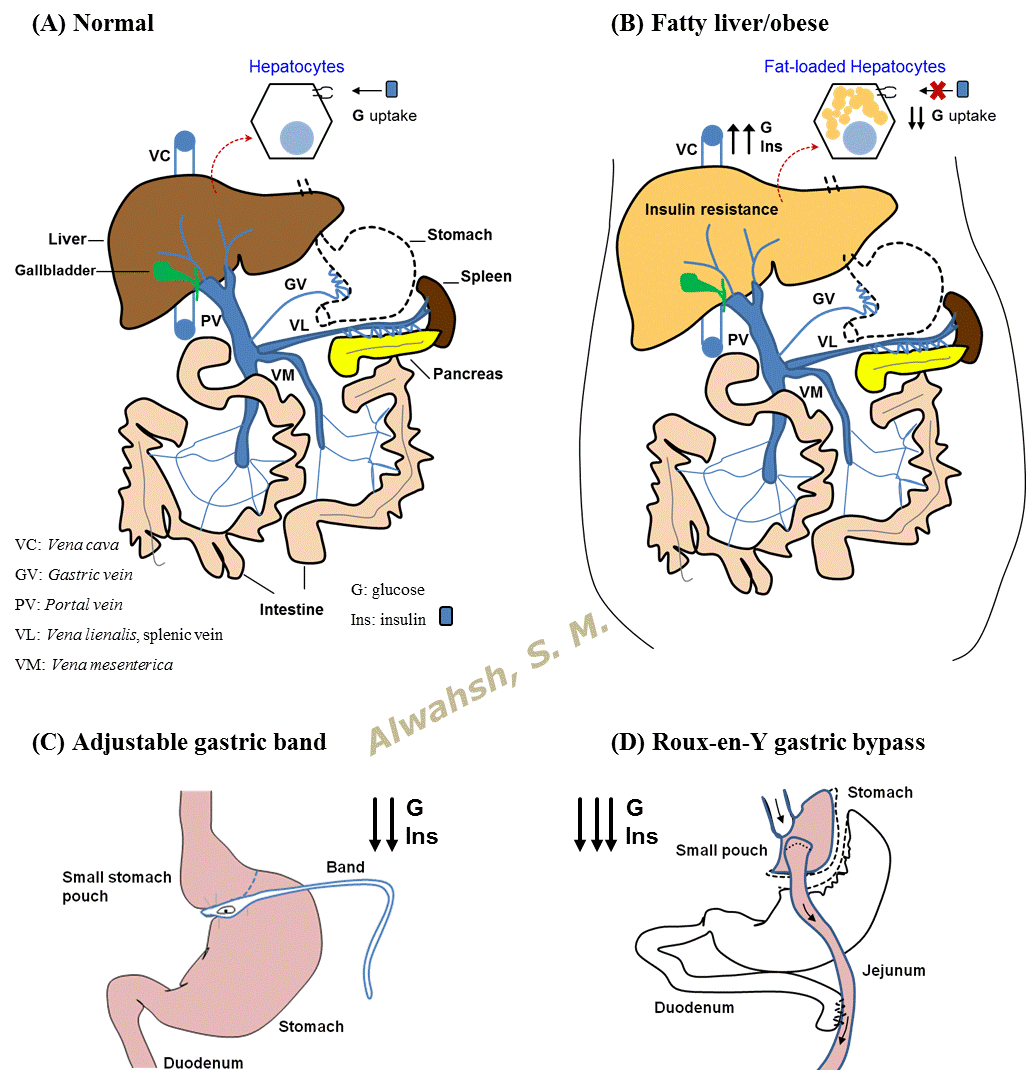| Salamah Mohammad Alwahsh* and Giuliano Ramadori | |
| Department of Gastroenterology and Endocrinology, University Medical Center Göttingen, Georg-August-Universität Göttingen, Germany | |
| Corresponding Author : | Salamah Mohammad Alwahsh Department of Gastroenterology and Endocrinology University Medical Center Göttingen Georg-August- Universität Göttingen Robert-Koch Street 40, 37075 Göttingen, Germany Tel: 4917683334454 E-mail: alwahsh.salamah@gmail.com |
| Received: August 24, 2015 Accepted: October 26, 2015 Published: October 30, 2015 | |
| Citation:Alwahsh SM, Ramadori G (2015) How Does Bariatric Surgery Improve Type II Diabetes? The ‘‘Neglected’’ Importance of the Liver in Clearing Glucose and Insulin from the Portal Blood. J Obes Weight Loss Ther 5:280. doi:10.4172/2165-7904.1000280 | |
| Copyright: © 2015 Ayuka F, et al. This is an open-access article distributed under the terms of the Creative Commons Attribution License, which permits unrestricted use, distribution, and reproduction in any medium, provided the original author and source are credited. | |
| Related article at Pubmed, Scholar Google | |
Visit for more related articles at Journal of Obesity & Weight Loss Therapy
The pandemic of obesity due to food “addiction” has led to a dramatic increase in rates of Type II Diabetes Mellitus (T2DM). T2DM is characterized by increased glucose and insulin (but not of the C-peptide) serum levels. Increase of insulin serum level without increase of insulin synthesis is supposed to be due to insulin resistance. Reduction of body weight (BW) through reduction of calories uptake is the most effective measure to treat T2DM and metabolic syndrome in obese patients. Appetite suppressant drugs which potentially reduce BW have several side effects, and as "lifestyle modifiers" are not approved of as potential antidiabetic drugs. In addition to the treatment of extreme (BMI ≥ 40) obesity, surgeons have expanded the offer of bariatric surgery as therapeutic option for diabetic, "non-morbid" (BMI ≤ 35) obesity. As a "collateral effect" of this surgical intervention, acute and long-term improvement of T2DM has been observed. Although several hypotheses to explain this improvement have been reported, the exact mechanism underlying the reduced hyperglycemia and hyperinsulinemia immediately after surgery is unclear. Though long-term effects of the different operations have not yet been studied thoroughly. Besides weight-loss, bariatric surgery may also reduce lipid accumulation in the liver. Reverse of the hepatic lipid deposition may improve clearance of glucose and insulin from the liver and consequently lead to reduction their concentrations in the peripheral blood. This mechanism has not, however, been considered when effects of bariatric surgery on glucose metabolism have been reported. In fact, a few reports on limited patients number already published have given information about changes of liver size and/or liver lipid content at different time points postoperation. Future prospective studies should focus on the changes in glucose and lipid metabolism induced in the liver by the various types of surgical interventions.
 |
 |
| Figure 1 | Figure 2 |
Make the best use of Scientific Research and information from our 700 + peer reviewed, Open Access Journals